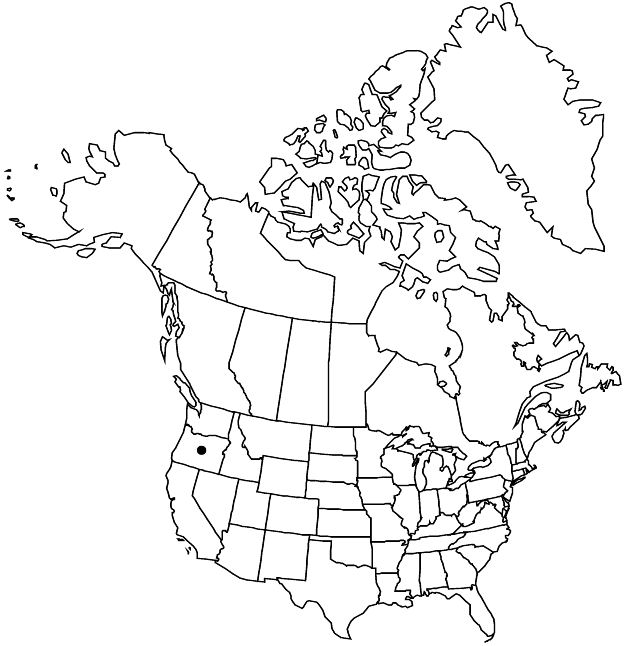Spiraea ×hitchcockii
Sida 18: 827. 1999.
Shrubs, 10–12 dm. Stems erect to arching, or decumbent, branched. Leaves: petiole 2–5 mm; blade narrowly elliptic to elliptic, obovate, 2–5(–6) × 1–2.8 cm, membranous, base acute to obtuse, margins irregularly serrulate to irregularly erose, venation pinnate, simple craspedodromous or semicraspedodromous, secondary veins prominent, apex usually obtuse, sometimes acute, abaxial surface puberulent, adaxial glabrescent. Inflorescences mostly terminal, irregularly shaped, usually elongate-conic to elongate-pyriform panicles, 1.5–6(–9) × 1.5–3(–4.5) cm height 0.5–1(–2) times diam.; branches puberulent. Pedicels 2–5 mm, puberulent. Flowers 3–8 mm diam.; hypanthia crateriform, 0.7–1.1 mm, abaxial surface puberulent, adaxial puberulent; sepals deltate, 0.5–1 mm; petals pink to dark pink, elliptic to wide elliptic, 1.3–1.7 mm; staminodes 5–12; stamens 10–20, 1–2 times petal length. Follicles asymmetrically falcate, 0.8–1.3 mm, not shiny, glabrous. 2n = 54.
Phenology: Flowering Jun–Sep; fruiting Jul–Nov.
Habitat: Wet meadows, aspen meadows, lake margins, moist woodland margins, wetlands, along creeks
Elevation: 300–2000 m
Distribution

Oreg.
Discussion
Hess and Stoynoff described Spiraea ×hitchcockii as a naturally occurring hybrid of S. douglasii var. menziesii and S. splendens var. rosea; it has been found within the Cascades of Oregon and is very likely to be found in other areas of the Pacific Northwest, where the two species have overlapping ranges.
Selected References
None.